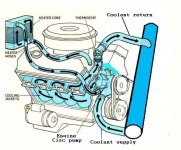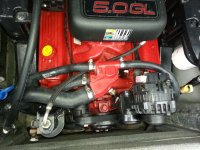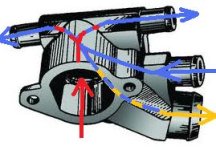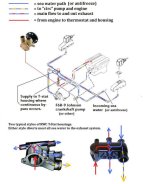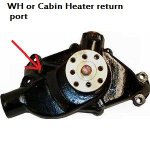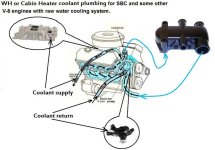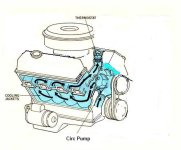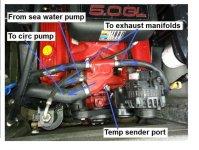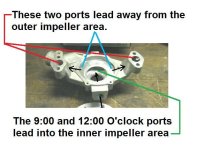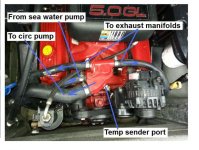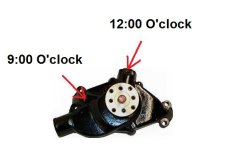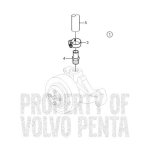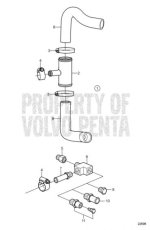Francisco Fred Viana
New member
I got a heater for my boat from Heatercraft. I finished al the installation but got stuck on the water lines.
I have a Volvo Penta 5.0 GL-H engine (2007)
I first tried to connect the lines to the ones going to the manifold but they were not getting hot... then I connected one at the engine drain plug (bottom back) and another one to the manifold (bottom back as well). I removed a plug on both of them and connected the lines in there.
I managed to get hot water quick however I noticed that the thermostat housing was not getting any hot at all and it was not showing the temperature properly.
Question: Where should I be plugging the lines? If possible, I would appreciate if you could point a bit more precise on the location instead of the way the manual says like: Plug on top of engine manifold and Plug on the water pump housing.
I couldn't find anywhere to plug on top of the manifold ... and on the water pump I see a big red plug on top of it and the alternative I thought was to remove the thermostat, put a T in place and plug the thermostat back on the T and the line in there.
All help very much appreciated.
I have a Volvo Penta 5.0 GL-H engine (2007)
I first tried to connect the lines to the ones going to the manifold but they were not getting hot... then I connected one at the engine drain plug (bottom back) and another one to the manifold (bottom back as well). I removed a plug on both of them and connected the lines in there.
I managed to get hot water quick however I noticed that the thermostat housing was not getting any hot at all and it was not showing the temperature properly.
Question: Where should I be plugging the lines? If possible, I would appreciate if you could point a bit more precise on the location instead of the way the manual says like: Plug on top of engine manifold and Plug on the water pump housing.
I couldn't find anywhere to plug on top of the manifold ... and on the water pump I see a big red plug on top of it and the alternative I thought was to remove the thermostat, put a T in place and plug the thermostat back on the T and the line in there.
All help very much appreciated.


